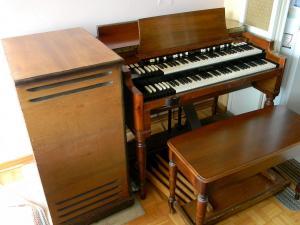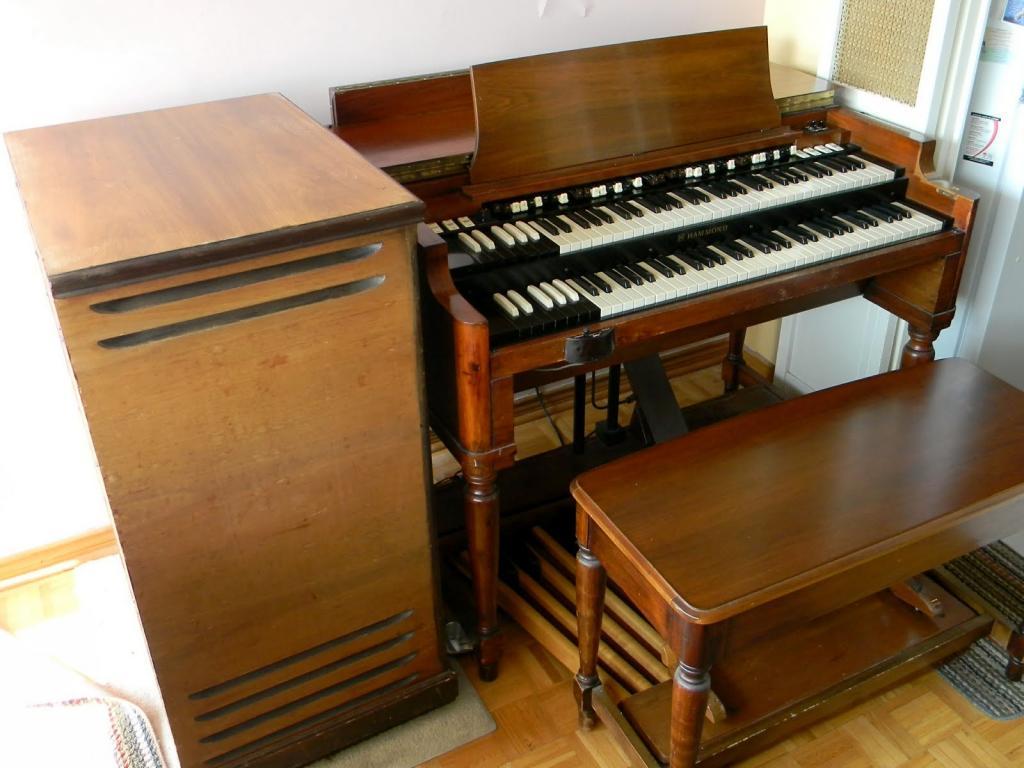
Last week American Blues Scene flipped the power switch on the story of Don Leslie and his amazing tone cabinet, and we began to see the wondrous speaker just as it was beginning to make waves. This week we delve deeper into the story, taking a look at just what makes that plain wooden box sound so amazing and how it has changed the face of music.
Last week we noted that Don Leslie thought the Hammond’s sound thin, flat and dry when confined to small spaces lacking naturally full acoustics. Bob Mitchell had similar feelings about the Hammond sound. Mitchell was an organist with Los Angeles radio station KHJ, and Leslie’s wife just happened to work at the station. When she overheard Mitchell remark about how he’d like a real pipe organ instead of his Hammond, she told him he should come over and hear her husband’s invention before deciding to purchase anything. Curious, Mitchell accepted the invitation. What he subsequently heard absolutely knocked him out, and he convinced station officials to purchase a tone cabinet from Leslie. He was so taken with the sound that he also stipulated to station administration that absolutely no one but Mitchell himself be allowed to use it. This was good stuff, and he wasn’t going to share it!
Mitchell’s playing was, of course, great advertising for Leslie, as the Hammond’s new sound now went out over the radio, but Leslie desired to sell his work to a broader audience, and what better way than to partner with Hammond, the very instrument he had used to develop his device?
While this would seem like a logical and simple way for things to proceed, it was not to be so. Much conjecture is available these days as to why Laurens Hammond refused Leslie’s request, from professional jealousy to tone deafness, but the end result was that Leslie was left on his own. This turned out to be a boon for the inventor, as he retained all rights and patents to his work, which only grew in popularity over time.
With this popularity came changes in the design of the Leslie, often there were differences in size and minor specs, but one of the bigger changes was from the original single-speaker/horn design. The Leslie speaker cabinet eventually evolved into one containing separate signals for treble and bass. The treble signal would be sent to a speaker that faces upward toward a horn with a roughly right-angled shape. The speaker plays into the bottom of the horn, and as the horn rotates, it creates the Doppler affect similar to the initial design. In the lower portion of the cabinet, a woofer points down and delivers the sound to a rotating baffle that causes a similar effect.
The application of the Leslie eventually moved beyond even its creator’s original intentions. While it still sits solid as a gospel instrument, musicians such as Jimmy Smith made the Hammond/Leslie pairing a staple in jazz, and players from all genres experimented with different sounds and wound up plugging all kinds gear into Don’s big wooden boxes. George Harrison’s vocals received the treatment on “Blue Jay Way” from the “Magical Mystery Tour” album. Hendrix applied it to guitar on “Little Wing,” Clapton on Cream’s “Badge” and Trey Anastasio of Phish has used it extensively as well. As mentioned in our Hammond piece, B.B. King’s “Bad Case of Love” is currently putting out a huge Leslie sound to the airwaves through the fingers of James Sells Toney.
While it may not be practical or affordable for every musician these days, the good news is that Leslie’s creation is available in a variety of forms. Other companies have produced different versions of the design, such as Fender’s Vibratone, used by Stevie Ray Vaughan on the song “Cold Shot.” Of course, with advancements in digital and analog effects, the range of choices has grown while the size has shrunk. Units such as the Line 6 POD, Uni-Vibe and Rotovibe all provide alternatives to purchasing pricey vintage gear that requires you to enlist a friend or two simply to get it up a flight of stairs. With so many options available, it is easy for a blues player to check out the magic of the Leslie.

